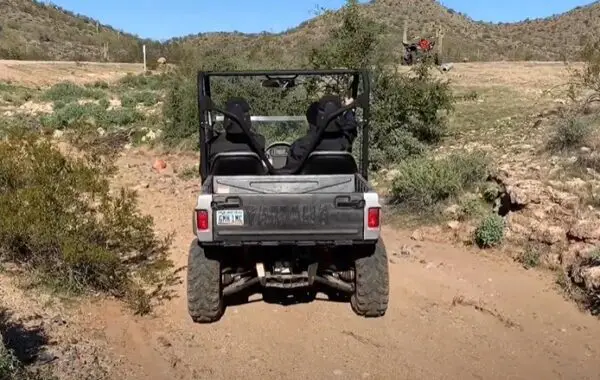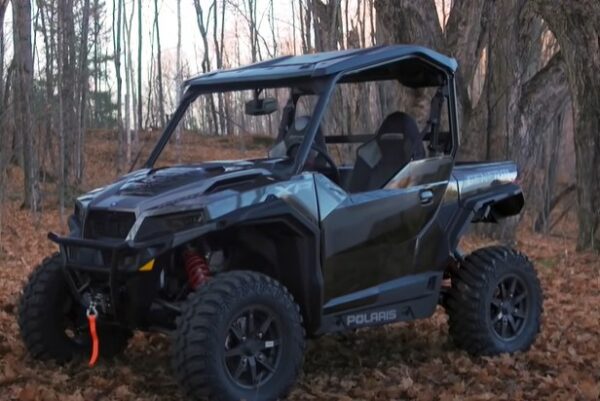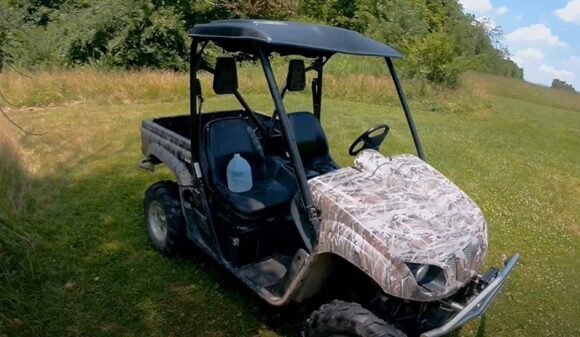The Yamaha Rhino 700 is a powerful UTV that can take you anywhere.
However, it also comes with its own set of problems that can leave even experienced riders scratching their heads in confusion.
In this article, we will explore some of the most common problems of the Yamaha Rhino 700 and how to fix them.
Read on for all the details!
Yamaha Rhino 700 Problems

1. Transmission Problem
The transmission problem in the Yamaha Rhino 700 is a common problem that many riders experience.
This problem occurs when you let off the gas and can cause the vehicle to slow down quickly, as well as make a grinding noise.
The main reason for this problem is usually an issue with the weights inside of the primary sheave, which is responsible for providing power to the drive train.
When these weights become unaligned or fall out of place, they can cause performance issues.
In order to fix this issue, you will need to inspect the primary sheave by removing the belt cover and pulling apart its components.
You should then carefully check all of the weights and cam for any signs of damage or displacement. If any weights appear to be damaged or out-of-place, it’s best to replace them completely.
Also, you should also check for middle drive gear problems by removing the three front diff bolts, front drive shaft, and front cover with the u-joint attached.
2. Clutch Problem
The clutch problem on this UTV is usually due to a combination of wear and tear on the one-way bearing and roller bearings, as well as damage to the five shoes and springs that are responsible for maintaining proper engagement.
When these parts become damaged, they can cause the wet clutch to have too much play, which in turn can contact the drive housing, resulting in engine stalling.
To fix this issue, you will need to check for excessive play in the five shoes and springs first. If one or more of them appear to be broken or loose, they should be replaced with new ones.
Also, you should also inspect the roller bearing that is connected to the shaft; if it has failed due to wear and tear, it should be replaced as well.
Finally, it’s important to also check whether or not the one-way bearing is operating properly; if it isn’t functioning correctly then this could be causing additional issues and should be fixed right away.
3. Fuel Injection Problem
The fuel injection problem in the Yamaha Rhino 700 is another issue that riders may encounter.
This issue occurs when the engine has difficulty properly delivering fuel to the cylinders, resulting in poor performance, stalling, and even a lack of power.
The main causes of this problem are usually related to either faulty spark plugs or an incorrect air/fuel mixture.
In order to fix this problem, you will need to inspect the spark plugs first; if they are old or worn out, then replacing them could be the best way to go.
Also, you should also check your air filter for any signs of clogging or debris buildup; if this is found then the filter should be replaced.
It is also important to adjust your air/fuel mixture as well; this can often be done with a simple adjustment from within your engine’s ECU.
4. Fuel Pump Problem
Another common problem that you can face is a fuel pump problem. This problem usually occurs when the fuel pump fails to deliver enough fuel to the engine cylinders, which results in a lack of engine performance.
The main causes of this issue are usually a faulty fuel pump, a clogged fuel filter, or an issue with the delivery system itself.
In order to fix this issue, you will need to inspect your vehicle first for any signs of problems with your fuel pump or delivery system. If necessary, you should replace any damaged components such as spark plugs or filters that could be contributing to the issue.
Also, you should also check for any signs of corrosion or debris buildup within your delivery system; if these are found then they should be cleared away before further use.
You should also consider having your vehicle professionally serviced if none of these steps resolve the issue.
5. Charging Problem
Some riders also reported that their UTV battery is not charging. The most common issue is a faulty rectifier, which is responsible for converting the Alternating Current from the stator into Direct Current for powering the battery.
If this component is not working correctly then it could lead to the battery not getting charged properly.
In order to fix this issue, you will need to check both connectors coming from the stator for any damage.
You should also measure the AC voltage between all possible combinations of wires in order to ensure that your readings are within acceptable ranges.
If there are any discrepancies then they should be corrected before proceeding further. It’s also important to inspect your battery as well; if it’s more than three years old then it may be time to replace it with a new one.
Another possible cause of this problem could be an acid imbalance in one or more cells of your battery; if this is found then you may need to use an electrolyte solution in order to help restore balance within them.
6. Engine Problem
The engine problem is one of the most common problems experienced with the Yamaha Rhino 700.
One of the main causes of engine problems is a dirty fuel injection system.
When this happens, dirt, grime, and other debris can build up in the injectors, which can result in poor performance and even stall outs.
To fix this issue, you should inspect all components of your vehicle’s fuel injection system thoroughly; if any signs of dirt or debris are found then they should be replaced with new ones.
Another cause could be worn-out spark plugs. Due to their constant exposure to high heat, it’s common for these components to become damaged over time.
In order to remedy this problem, you should inspect your spark plugs for any signs of wear and tear; if necessary, they should be replaced.
You should also check for any blockages or damages within your vehicle’s delivery system as well. Fuel filters can often become clogged or damaged due to dirt and debris buildup; if this is found then you should clean it up.
You should also inspect all lines connected from the fuel tank as well as any fuel tanks that may have been installed on your vehicle; if these components are damaged then you will need to replace them.
Is a Yamaha Rhino 700 Any Good?
Yes, the Yamaha Rhino 700 is an excellent UTV choice for off-roading. It has a powerful engine, great suspension and handling, and plenty of storage space.
The 4WD feature helps to provide extra stability when driving on slippery terrain.
Also, its straightforward maintenance makes it a great option for those who enjoy working on their own vehicles.
What Users Say About Yamaha Rhino 700?
Most users have consistently praised the Yamaha Rhino 700 for its incredible power, rugged build quality, and reliable performance.
The vehicle is suitable for both leisurely riding in the countryside and off-road adventures.
According to several reviews, users find it easy to maneuver around curves and sharp turns.
Some users also appreciate its superior suspension system, allowing them to take on steep terrain with ease.
Here are a few reviews of this UTV’s users.
“I have a 09 rhino 700, no problems at all so far. Stock it would do 42 mph with a different sheave and a msd I can do 56 mph. Everything else is stock. If you guys are going to side by sides then I would go with the most reliable which I think is yamaha. Also don’t forget the new yamaha viking,its just bigger in size.”
“Have 2013 700 3000 kms no issues and i ride it hard up here in canada trails rocks mud and road have 2 in lift and bigger tires for clearance reasons best buy ever and ive been thru several quads in my 40 yrs playing starting with 3 wheelers rhino cant be beat.”
Conclusion
Yamaha Rhino 700 is a great UTV that offers plenty of features and power. However, it’s important to be aware of the problems associated with this UTV before investing in one.
These are the common problems of this UTV.
- Transmission Problem
- Clutch Problem
- Fuel Injection Problem
- Fuel Pump Problem
- Charging Problem
- Engine Problem
Arctic Cat Wildcat 1000 Problems


